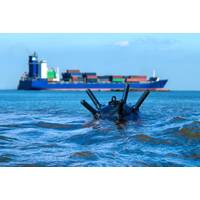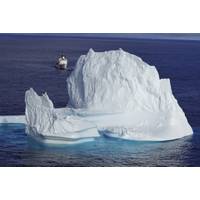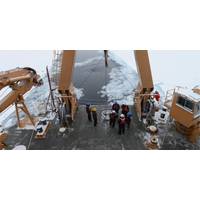
Maritime Risk Symposium 2024 – Great Power Competition and Gray Zone Engagement
activities against the maritime industry and the Marine Transportation System became front page news with drone attacks, ship sinkings, mining of grain-shipment corridors, cutting of subsea cables, and more. Due to adversarial actions, the industry itself is now at the center of attention for the U.S. Coast Guard, U.S. Navy, U.S. Marine Corps, U.S. Merchant Marine, inter-agency partners, state and local governments, and international stakeholders. Vessels have been harassed and rammed, message traffic has been blocked, and continuing cyber attacks have all interrupted maritime trade. Panel presentation

Beyond the Tip of the Iceberg Tech: RDT&E's Annual Arctic Technology Evaluation
The Coast Guard Research and Development Center (RDC) teamed up with Coast Guard Cutter Campbell’s crew this summer to evaluate five technologies as part of the RDC’s annual Arctic Technology Evaluation. The Campbell crew conducted the evaluations during their two-month deployment supporting joint Arctic operations off Greenland’s western coast, returning to their Kittery, Maine, homeport on Sept. 29, 2020.“Testing various technologies by cutter crews for operation in cold and Arctic environments provides highlights on what works and what may need improvement, and can help

#Oi2020: Subsea History
In 2003, Dr. Larry Mayer, director of the Center for Coastal and Ocean Mapping (and his team at the center), worked closely with the U.S. Coast Guard (USCG) to gain access to a platform capable of breaking and transiting through ice, while also supporting the scientific equipment needed to gather data on the extended continental shelf (ECS). The Coast Guard Cutter Healy was tasked with the job, and during Mayer’s first outing with the vessel that year he and his team discovered a 10,000-foot high seamount approximately 400 miles north of Barrow, Alaska, which they named the Healy Seamount.


 February 2025
February 2025





